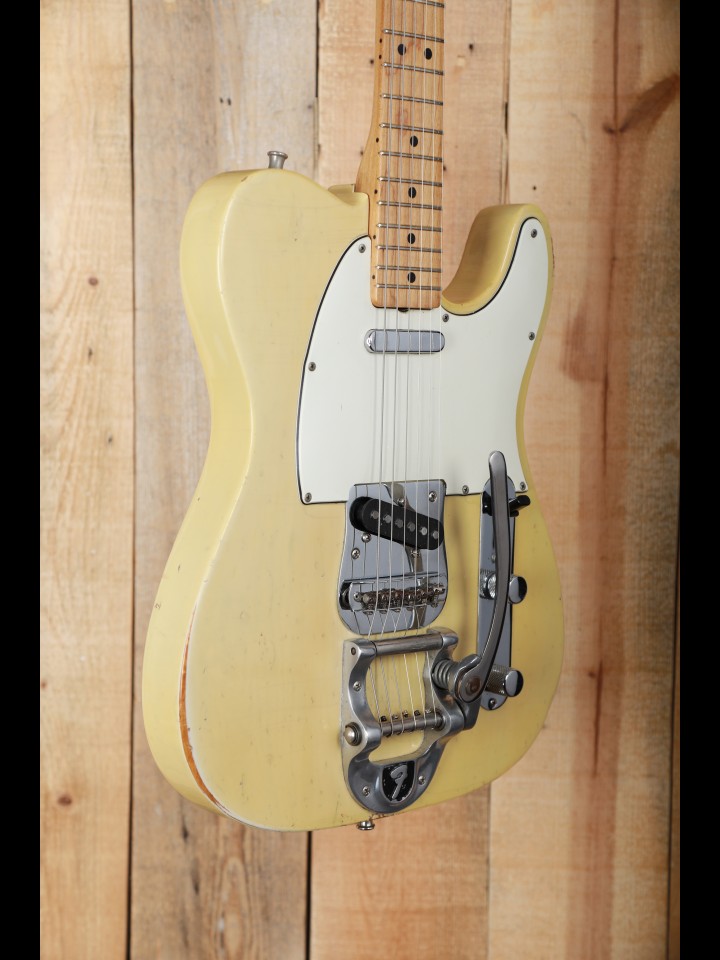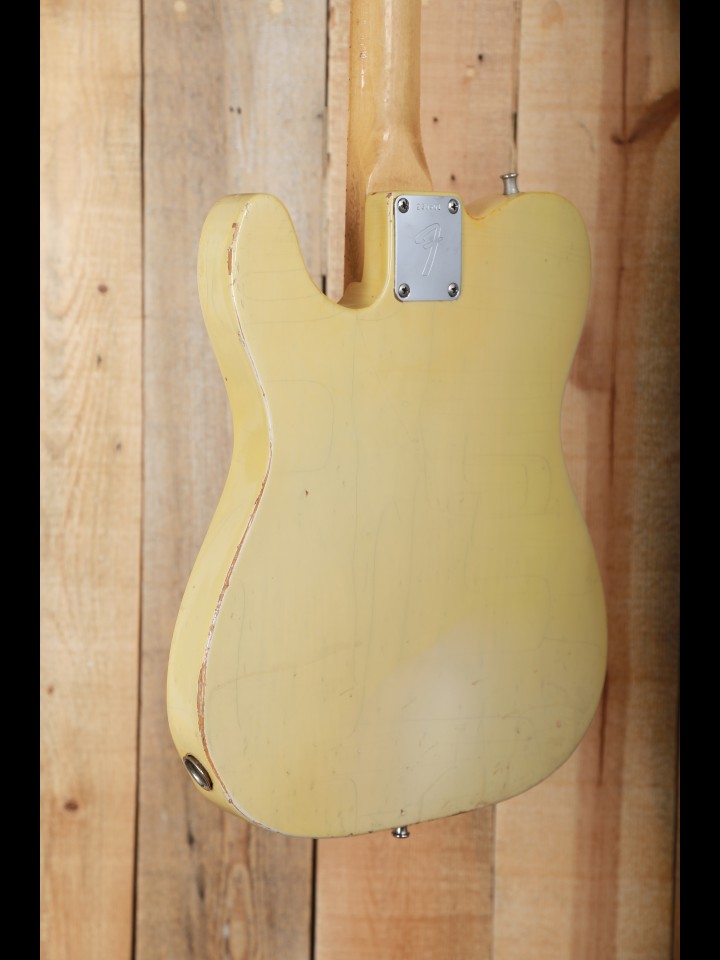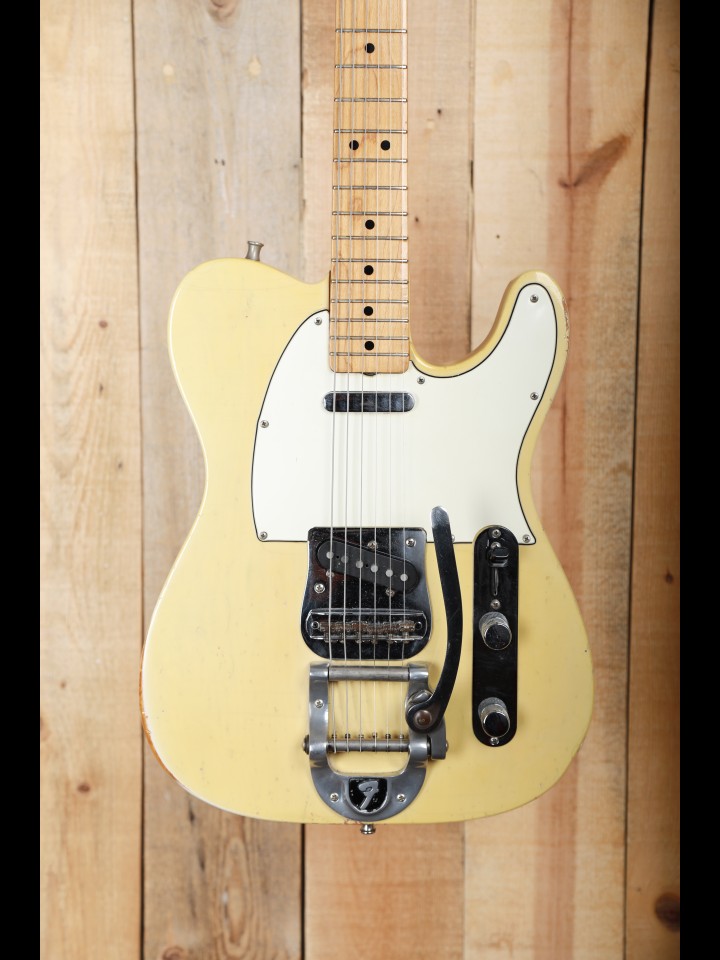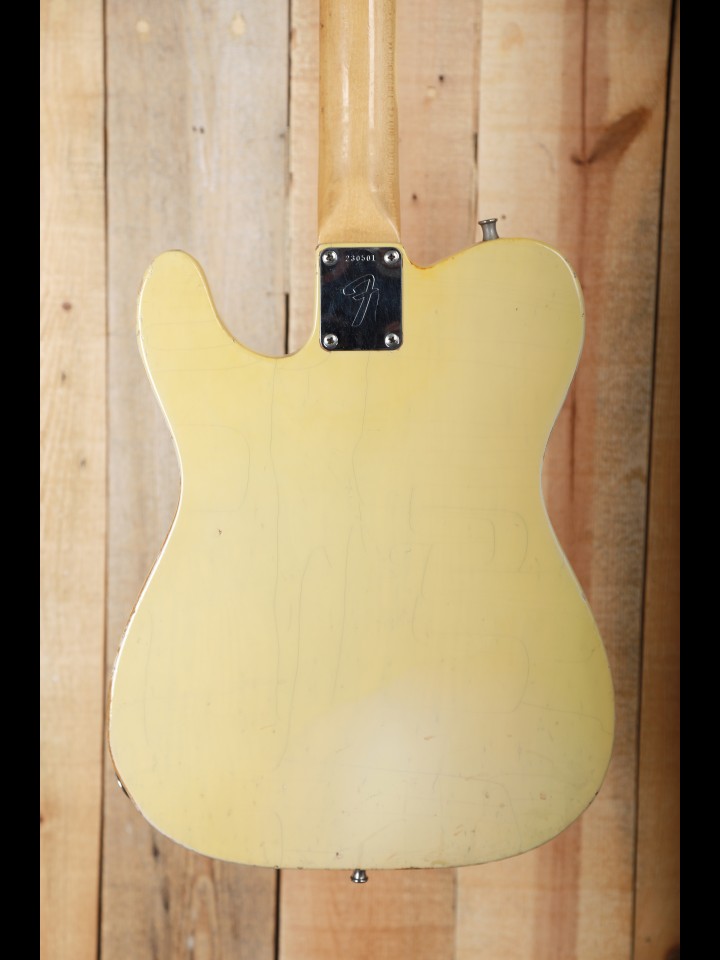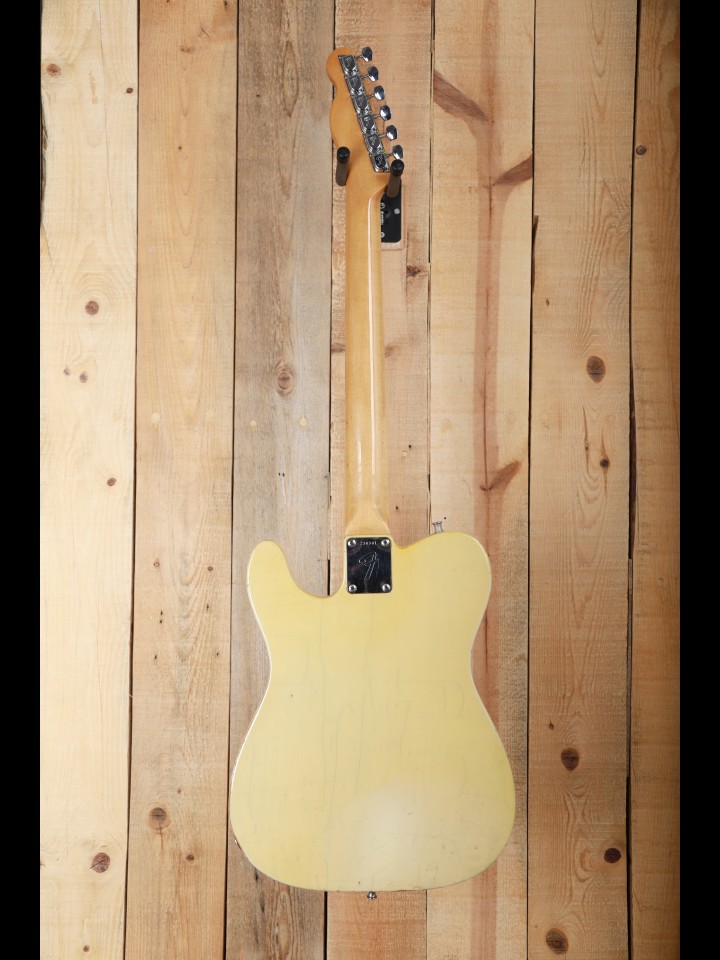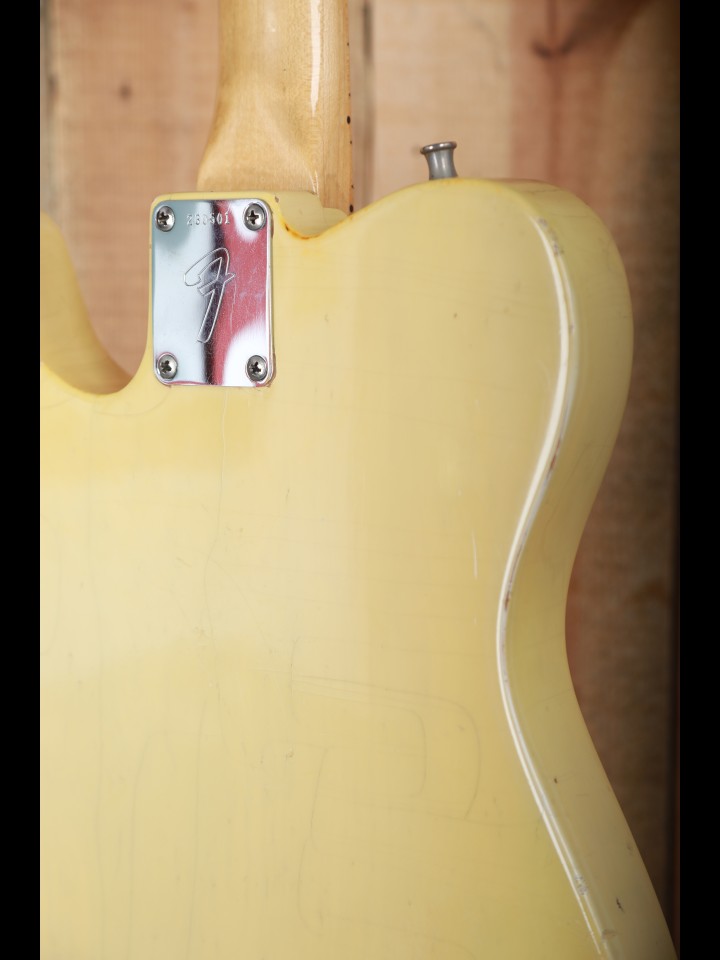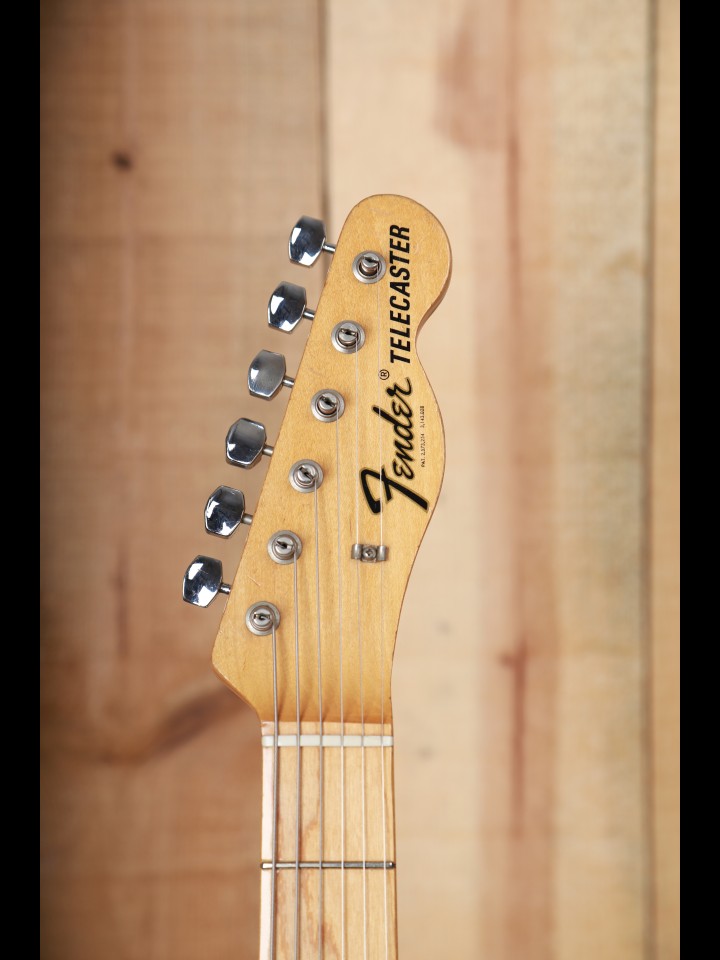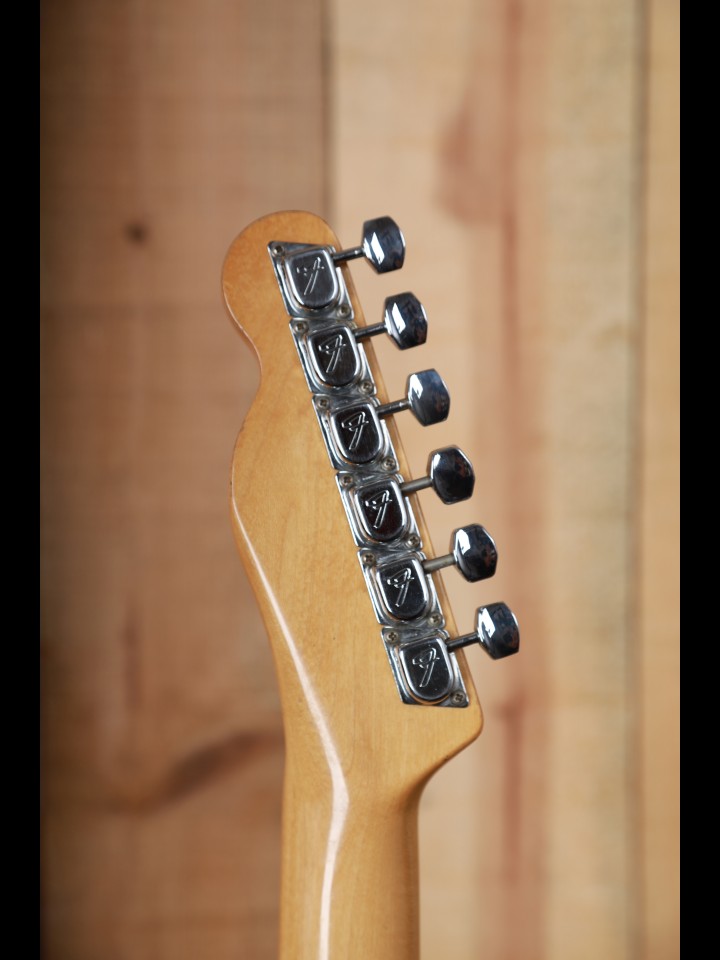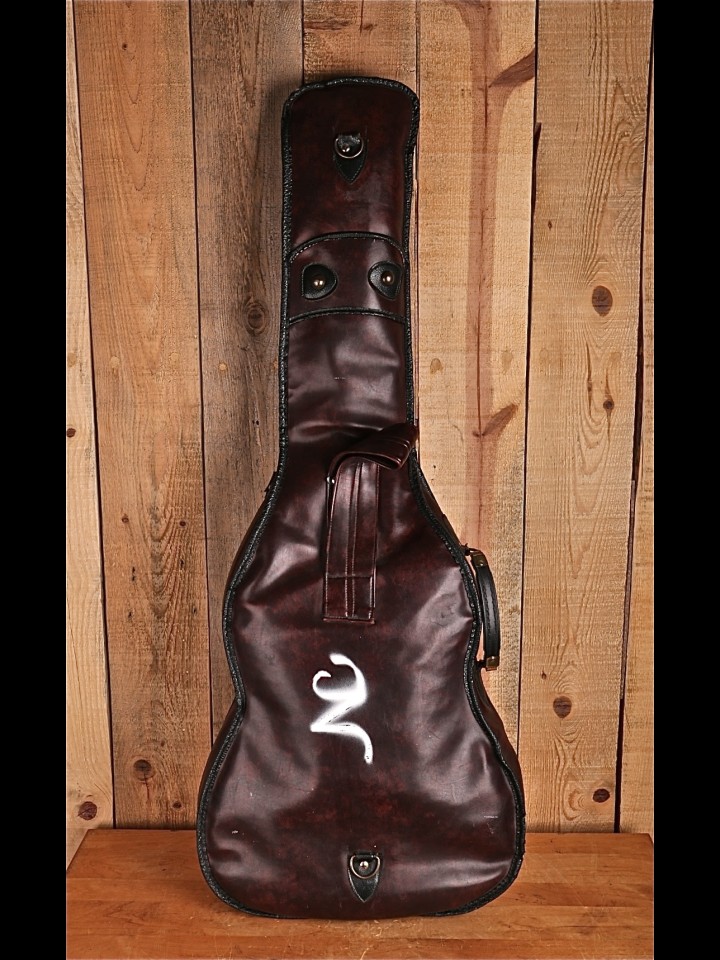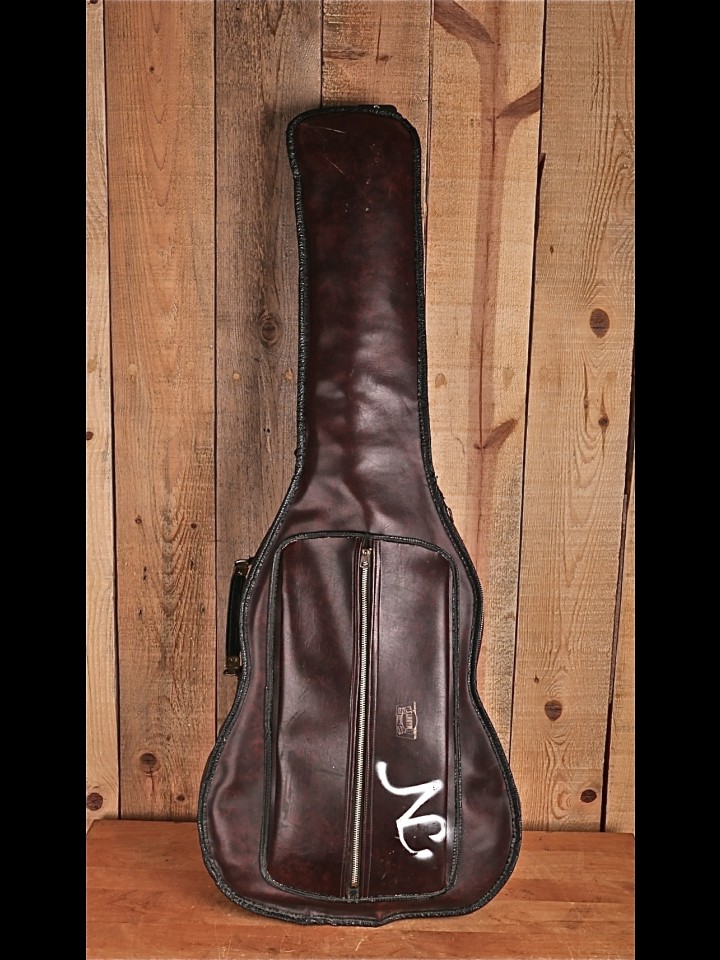1968 Telecaster with Bigsby
The Fender Telecaster is one of the most popular electric guitars of all time. Introduced in 1951, it quickly became an industry standard for many reasons -- practicality, affordability, playability, ease of maintenance and most importantly, the sound. Possessing a loud, brash and twangy tone, it was perfect for the music of the time. Rock and Roll, Blues, Pop and probably what the model is most famous for -- Country. The developing world of country music begged for an electric guitar that would give it a unique sound and the telecaster delivered in spades. To this very day, country pickers will tell you the Tele (as the name was shortened to) is essential for the genre. The picking techniques got more and more complex, but the tone stayed the same!
1968 was a pivotal year for the Telecaster. Paul Bigsby had actually designed a version of his “True Vibrato” unit for Fender’s first “Solid Body Spanish Guitar” all the way back in 1953, but for some reason it didn’t catch on until 15 years later when for the first time the ’68 Fender catalog offered a Bigsby equipped Tele. Imagine being able to imitate the polyphonic, swooping vibrato of a steel guitar on a Telecaster! It added a whole new dimension to standard electric guitar playing. A factory Bigsby equipped Tele did not require the “through-the-body” steel ferrule-reinforced holes for stringing, as the entire bridge/vibrato tailpiece assembly was fully top-loaded. This meant the back of the body was plain (no holes), and this detail is the quickest way to tell whether the vibrato unit was installed by Fender or added later.
This ’68 model is also notable for having one of the last of the “maple cap” fingerboards. A very thin veneer, approximately 1/8th of an inch thick covers the curved top of the neck over the truss rod cavity and eliminates the need for the walnut “Skunk Stripe” on the back of the neck, in the exact same way the rosewood boards had done for the ‘60s models. The maple cap was very short lived because the entire guitar was redesigned in 1969. Up until late ’68, the Telecaster neck was still finished in nitrocellulose lacquer, but later that year they switched to polyurethane. This must be one of the very last models made that year because the neck finish appears to be Poly.
This Telecaster also is outfitted with 1 meg pots, which Fender was using more and more at the time. These give this guitar the ability to be astoundingly bright if desired. This guitar possesses the warm but twangy Tele tone in spades and has to be heard to be fully appreciated. In addition to this electronic feature, this guitar certainly does feel like an older guitar. The wood has been broken in from years of playing and sings like no other. As an added byproduct of years of wear, the lacquer is still somewhat shiny but has a wonderfully played-in feel. Needless to say, this guitar sounds as good as it looks.
One thing is for sure…..whether you are a “Fire Breathing” Chicken-Picker or a new student of the style, playing this cool axe will make you smile. The Bigsby is simply a wonderful bonus.
CONDITION/ORIGINALITY
This Telecaster is almost entirely original from what we can determine. While we cannot state this with complete authority without a receipt or proof of purchase, it is our understanding that it was a single owner guitar, originally purchased at Rudy's in New York City (as also evidenced by the stamp on its gig bag). The frets appear to be original, and still have decent mass--though, we have leveled and re-crowned the frets as needed during the setup work we've done prior to offering the instrument for sale. (For your general reference, we take the trust that folks place in us very seriously, and thus we consider it an imperative that any instrument we sell is not only a best quality example, but also properly adjusted to perform at a professional standard.)
As shown in the attached photos from our initial inspection, the neck is stamped 3DEC68B, which decodes thusly: 3 = Telecaster, DEC = December, 68 = 1968, and B = 1 5/8" nut width (this was the standard nut width). The neck is otherwise a typical C contour of the era, which has a comfortable and moderately slim feel.
While the bodies at this time were not dated, the patina, neck pocket stamp, impressions from Bigsby number, and the appearance of the finish beneath the control cavities, pickguard (which, incidentally, is the proper reversed pearloid), and bridge hardware, all point to an original body with original blonde finish. Along that line, the visual footprint and, again, the impression left from the Bigsby also suggest that the Bigsby was a factory original.
The wiring of this guitar is the only area where there is a little uncertainty. Much of this appears to be original: The pots are the appropriate 1 MEG Stackpole (304) with the tone pot date being the 17th week of 1966 (Fender commonly bought parts like pots in bulk, such that certain parts were years old before they were actually drawn from a bin). The volume pot is also a 1 MEG Stackpole--its date is obscured (also common), but it absolutely looks to be consistent in age with the tone pot. The CRL 3-Way switch is also period correct, and the ceramic caps appear to be original as well.
The good vibes of the control harness aside, the originality of the pickups remains a bit of a head-scratcher, as neither are gray bottoms. It is well known that some black bottom pickups have appeared on late '60s Telecasters (again old stock being used indiscriminately), and this may well be the case with the neck pickup. The neck pickup cloth leads are consistent both with earlier pickups and also the wiring used at the control panel. Along that line, the cloth wiring at the control panel not only looks old, but the solder joints look mostly undisturbed (with the exception of the bridge pickup). Meanwhile, we do suspect that the bridge pickup is not original for the following reasons: its base plate appears to be brass, and the two Phillips head screws on the base plate would not be typical of a Fender pickup of this era; it has raised, non-rounded flat poles; and its ground and lead wire are inconsistent with the neck pickup and the rest of the control panel (although the PVC coating of these leads is more consistent with that used from the late '60s through the '80s). For this reason, we cannot state with authority that either or both of the pickups are original, despite our suspicions about the neck pickup.
All things considered, we rate this guitar as EXCELLENT condition.
- Solidbody Single Cutaway Body Shape
- 1 5/8” Deep Ash Body
- Translucent Blonde Polyester Finish
- Maple Neck with Maple “Cap” Fingerboard
- 7.25” Fingerboard Radius
- Black Dot Fingerboard Inlays
- Large Bold Black CBS Fender "TELECASTER" Logo
- Electric C Shape Neck Carve
- Polyurethane Neck Finish
- Single-Coil Telecaster Pickups
- 1-Meg Pots
- 3-Way Modern Tele Switching (Bridge, Both, Neck)
- “Interstate Sign” Shaped Flat Bridge Plate with Jazzmaster Type Bridge and “Threaded” Saddles
- Factory Installed “F” Stamped Bigsby Top-Loading Vibrato Tailpiece (No Ferrule Holes In Back of Body)
- Fender “F” Tuning Machines
- 3-Ply White Pickguard with Pearloid Bottom Layer
- Bone Nut
- 1 5/8" Nut Width
- 25 1/2" Scale Length
- 21 Frets Vintage Frets
- Non-Original Gigbag
| Brand | FENDER |
| Model | 68 TELE BIGSBY |
| Serial Number(s) | 230501 |


